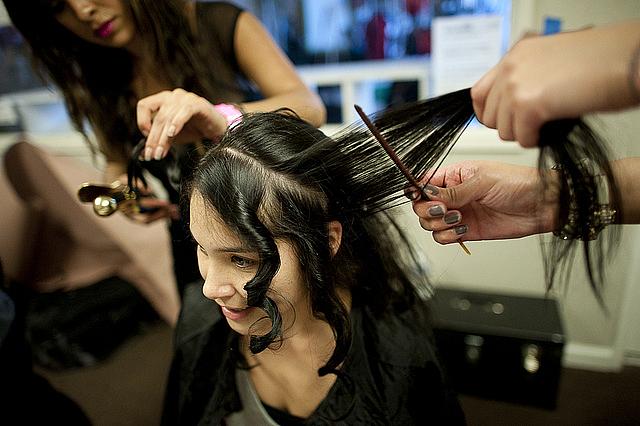License Overdrive: Professional licenses spread without rhyme or reason

Just which professions should require licenses? A new report suggests the market can take care of itself in many instances.
I still remember the look on her face.
I’d been going to the same woman to cut my hair for five years, and she was always the picture of calm. Until the day she looked at the front door as it was opening and said to me, “I have to run.” Then, her face the picture of panic, she ran.
An inspector from the California Board of Barbering and Cosmetology had just walked in for a surprise inspection. And, as it turns out, the woman who had cut my hair for five years did not have a license.
I thought of this when I was reading “Occupational Licensing: a Framework for Policymakers,” a new White House report on just what it says it’s about. It’s 66 pages, plus references, and I read it so you don’t have to. Here are my main takeaways for reporters and health professionals.
Licensing isn’t just for doctors, lawyers, and pilots anymore. The report found that the share of workers licensed by states has grown five-fold since the 1950s, growing from 5 percent to 25 percent. The report presents this mostly as a bad thing because much of the licensing doesn’t appear to be aimed at protecting the public. Here are some of the stats. When you look across states, there are now 1,106 jobs that require some sort of license. You might think that this would mean that someone who needs a cosmetology license in one state would need one in another state or, would it be crazy to suggest that they have a license that works in all states, the way a U.S. passport works as ID no matter where you go? That’s not the case. In fact, only about 5 percent of jobs that require a license require a license in all states. (There may be some semantic confusion here, of course. Someone doing the exact same jobs in two states might be called something different by a licensing agency in those two states.)
Yet doctors remain the poster children for why we need licenses. The chief examples provided throughout the report for when licenses serve a legitimate public health and safety purposes are doctors and other health professionals. The report says:
This can be especially important in situations where it is costly or difficult for consumers to obtain information on service quality, or where low-quality practitioners can potentially inflict serious harm on consumers or the public at large. Doctors’ competence, for instance, is difficult for their prospective patients to evaluate, and the consequences of inferior work may be severe.
This is one of the most interesting themes in the report, which ultimately lands on the idea that we need fewer licensed professions. (I’ll write more on the recommendations in a later post.)
Licensing varies greatly across the states. You will not guess which states have created the largest populations of licensed professionals. And which the fewest. I guessed California with the most. Wrong. Then New York. Wrong. I thought my live-free state of Montana would require the fewest. There are 10 states in which more than a quarter of the workforce is licensed by the state. They are, from 33 percent down to 25 percent: Iowa, Nevada, Washington, Florida, Kentucky, North Dakota, Hawaii, Alaska, West Virginia, and Oklahoma.
California actually ranks about in the middle, with 20.7 percent of the workforce licensed by the state, the same as New York. Montana is a little higher than that at 21.3 percent. The lowest is South Carolina at 12.4 percent — a tiny slice compared to Iowa – followed by Rhode Island, New Hampshire, Kansas, Indiana, Minnesota, and Delaware, all at about 15 percent or lower.
The through line in the report is the idea that the market can take care of itself in many instances. Bad actors will be weeded out and the collective consumer voice is more likely to rein in bad behavior than a poorly funded licensing board with no cops on the beat to do things, like, raid a hair salon.
I have to say, in five years I never had so much as a nick, scrape or infection from my unlicensed hair stylist, but anecdotal evidence does not make good policy. This report offers a wealth of real evidence, which I’ll write about more in my next post.
[Photo by bobbi vie via Flickr.]
